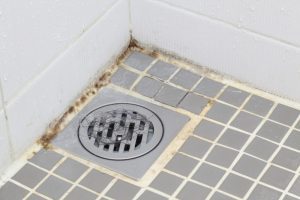Molds and Fungi are simple organisms medically known to cause a host of health symptoms
By Jeff Sorg, OnlineEd Blog
(July 21, 2017)
 (PORTLAND-OR) – Fungi are medically known to cause allergies, hypersensitivity pneumonitis (HP), humidifier fever, infections, mushroom poisoning, mycotoxicoses, and mucous membrane irritation. Some of the Penicillium, Aspergillus, Stachybotrys, Paecilomyces, and Fusarium can be hazardous to health under ideal conditions.
(PORTLAND-OR) – Fungi are medically known to cause allergies, hypersensitivity pneumonitis (HP), humidifier fever, infections, mushroom poisoning, mycotoxicoses, and mucous membrane irritation. Some of the Penicillium, Aspergillus, Stachybotrys, Paecilomyces, and Fusarium can be hazardous to health under ideal conditions.
Molds and Fungi are simple organisms, and microfungi are only visible through a microscope. Plaster and wood-rotting fungi are known as macrofungi because they produce sporing bodies that are visible to the naked eye. Molds and mildews are names given to thousands of species of Filamentous Fungi. Most molds and fungi do not cause health problems and are found on plants, foods, dry leaves, and other organic materials. In fact, molds and fungi perform a valuable function as they assist in breaking down dead material.
Mold spores are very tiny and lightweight, which allows them to travel freely through the air. Other types of mold colonize as a network of filaments by attaching themselves to host material. For molds to grow, they need a food source and moisture. Hydrophilic types of fungi need conditions close to saturation, or at least very damp conditions. The Xerophilic types of fungi grow in drier conditions, with only minimal moisture. Molds that have food and moisture will grow in an indoor environment – even in an arid climate. Evidence of mold growths can often be seen in the form of discoloration ranging from white to orange and from green to brown to black growing on various materials found inside and outside the house.
Adverse health effects from fungi usually depend on the dose and duration of exposure to the mold source. The methods of exposure are inhalation, exposure to skin, and ingestion. The groups of people at higher risk are elderly individuals, pregnant women, children, and those with compromised immune or respiratory systems. Health problems generally may be grouped as follows:
- Infections
- Respiratory problems
- Nasal passage problems
- Eye problems
- Central nervous system problems
- Fever
- Possible death if exposure results from extremely toxic varieties
Remediation should be implemented when a structure has a mold or mildew problem. The following are regarded as the necessary steps in any remediation or cleanup process:
- Identify and correct the moisture source. No permanent solution to the identified mold problem can be realized unless the source of the moisture fueling the mold growth is identified and corrected.
- Hard materials that are not absorbent, such as glass, plastic or metal, must be properly disinfected. Disposal of these is not necessary.
- Carpets, rugs, furniture, and other items with absorbent material must be removed and discarded if not thoroughly dried within 24 hours of water contamination. This type of material, even if disinfected, will usually continue to harbor unsafe mold after decontamination attempts. Therefore, it is best to remove and discard all porous material.
- All stained ceiling tiles, carpets, or wallboard should be removed and properly discarded.
- If a structure was flooded, the sheetrock should be removed to at least 12 inches above the high water mark. After sheetrock removal, the wall interior should be inspected for signs of mold.
The following cleanup steps should be followed in a mold remediation situation:
- Identify whether contaminated material can be saved or should be removed and discarded.
- If the material can be saved, before disinfecting the contaminated area or materials, clean the materials and surfaces to remove as much of the mold as possible.
- After the contaminated area has been cleaned, the nonporous surfaces must be disinfected.
The removal of contaminated material should be regarded as a hazardous process, and contaminated materials should be disposed of properly.
###
For more information about OnlineEd and their education for real estate brokers, principal brokers, property managers, and mortgage brokers visit www.OnlineEd.com.
All information contained in this posting is deemed correct as of the date of publication, but is not guaranteed by the author and may have been obtained from third-party sources. Due to the fluid nature of the subject matter, regulations, requirements and laws, prices and all other information may or may not be correct in the future and should be verified if cited, shared or otherwise republished.
OnlineEd® is a registered Trademark

